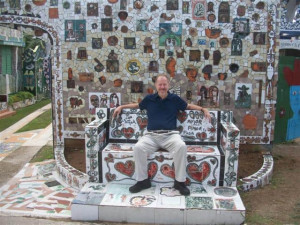
By Philip Sheldon, CEO
In early November 2011 I had the privilege of being a participant in a fully-licensed humanitarian tour of Cuba with 15 other American men. Our group donated over 200 pounds of medical supplies to a home for elderly women and for an HIV/AIDS clinic.
During this trip we spent time in Havana on the north coast (the Florida Straits connecting the Gulf of Mexico to the Atlantic), and in Trinidad, a much smaller city on the southern Caribbean coast, with a stop in Cienfuegos along the way. It has been fascinating to see what has changed and not changed since my previous visit with a group of educators in 2000, both in terms of the people and the environment in which they live.
What hasn’t changed is that the Cuban people long ago understood that they cannot change either their own government or the American government, and they’ve gotten on with their lives. They are all victims of a political stalemate that is vastly beyond their control, but in their daily lives, they refuse to play the role of passive victims. Despite the extremely low income of
most residents of Cuba, most people are well-dressed (especially younger people), have enough to eat, and smile and sing a lot.
Quite striking is the clear sense of shared identity and community which transcends race, age, gender, sexual orientation or profession. In this regard, Fidel and Raul Castro have succeeded in creating a society that at least on the surface is quite egalitarian. This is a society with far more racial integration than is visible in the United States several decades after the landmark civil rights legislation.
A large percentage of the Cubans who still live on the island are of mixed racial background, and most groups of friends that we saw included black, white and mixed-race people. This is also visible among hotel and restaurant staff, salsa dancers in Trinidad, audience members for the flamenco dance performance, chess players in the park, and residents and staff of the home for elderly women where our group donated a portion of our medical supplies.
Contemporary Cuba is famous for its classic cars from the 1950s and for its large sections of grand buildings built as far back as colonial times. On the surface, the city of Havana has not changed much during the decade since my last visit. However, most building facades show another decade of deterioration, and too many of those facades betray empty space behind, where walls and roofs have caved in.
There are virtually no recently-built buildings, either in the city center of Havana, the suburbs, the countryside or in the smaller cities of Cienfuegos and Trinidad. However, in the heart of Havana’s historic district there are several grand old buildings that have been restored and turned into restaurants and shops. This demonstrates the potential of this area, and offers hope as one surveys the vast stock of dilapidated buildings. The renovations are part of a creative process that began with a UNESCO grant, and has become a self-sustaining loop with funds from thriving new businesses being used to renovate other buildings.
In Havana we were exposed to artists in several different mediums. We had a lecture on the diversity of Cuban music and several members of our group attended a Spanish flamenco dance performance at Havana’s largest theatre. We also drove to the upscale Miramar district to the home of Jose Fuster, a very creative Cuban artist. His specialty is colorful ceramic tiles, and these adorn all the walls of his home – and his neighbors’ homes – and the walls in front of each house – and the bottom of his swimming pool.
One night several of us had drinks on the panoramic terrace of the Hotel Nacional, a huge classic hotel overlooking the sea. From there we walked back to our hotel along the Malecon, Havana’s seawall. Along the way were various couples and groups of friends, but at one spot our “gaydar” went off and the smiles from the guys there assured us that we had found the gay part of the Malecon. We found a couple of young men who had fairly good English and we wound up sitting down with them for drinks and getting their perspective on what it is like to be gay in a country where most young men live with their parents until marriage (not easy). Outlets such as the Malecon wall, parties that move between different venues and a couple of dance clubs provide them a chance to meet friends.
Read Part 2 HERE
Click here to check out our Gay Cuba Cycling – Bike Western Cuba.







